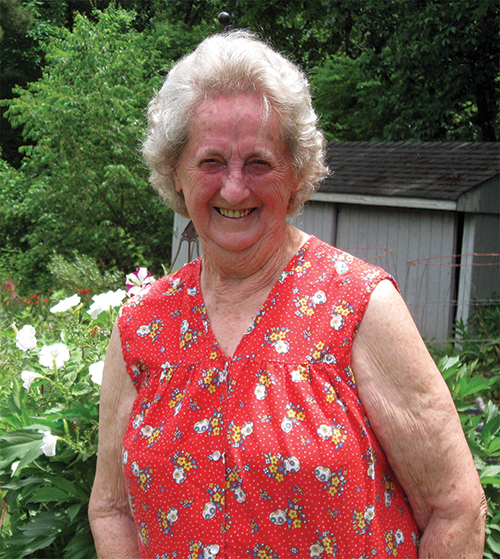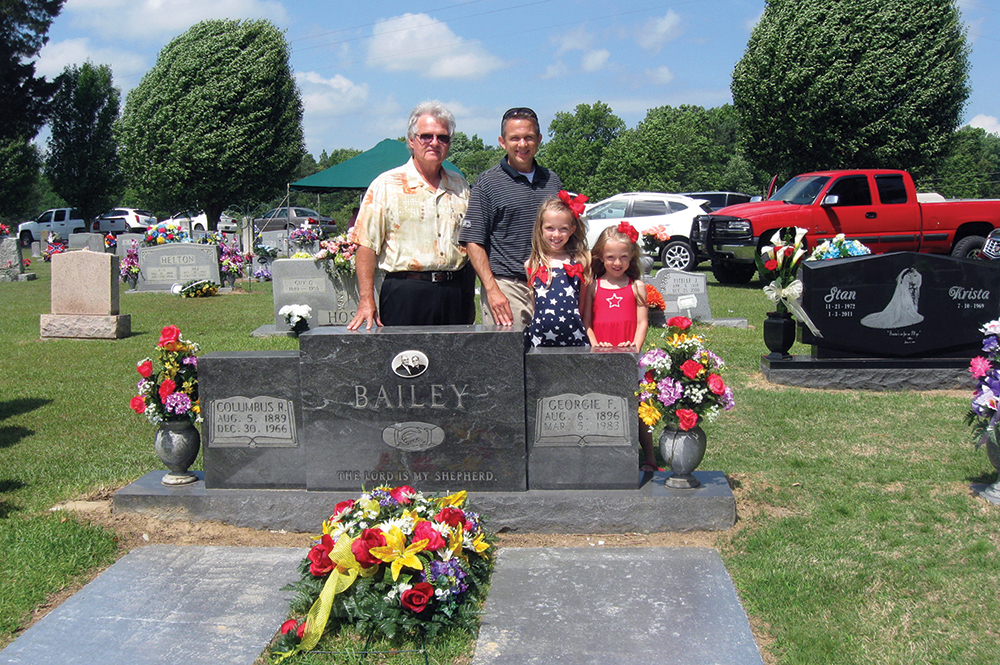A fading tradition: Decoration Day in Northeast Alabama
Story and photos by Robin Ford Wallace
Marcell Stiefel strolls across the grass in the May sunshine, making introductions.
“My dad and mom are over here,” he says. “That’s my aunt right yonder. Now, this old boy right here, his sister is my first cousin, but I ain’t no kin to him. His dad married my dad’s sister and she passed away and he married again.”
Stiefel’s “un-cousin,” Kenneth Black, shoots back a wisecrack about not claiming Stiefel either, but the others Stiefel mentioned say nothing, because, as Edgar Lee Masters wrote, “All, all are sleeping on the hill.”
What is this? A family reunion? Yes, but for an extended family, including representatives not just from different clans but from both sides of the grass. We are in the Old Sardis Cemetery near Section, Ala., and this is “Decoration Day,” when the community gathers to remember its dead.
Decoration Day – or just Decoration, as most say – is a tradition so prevalent in northeastern Alabama that natives toss off the name like “Christmas” or “Easter.” But people who grew up in other parts of Alabama may never have heard the term.
The internet is equally clueless. Google “Decoration Day” and you will learn it is another name for Memorial Day and that it began just after the Civil War, when veterans placed flowers on the graves of the war dead.
Today’s Decoration Days do involve putting flowers on graves, and the Old Sardis version does happen on the fourth Sunday in May, so last year it fell on Memorial Day weekend.
But some years it doesn’t, and anyway, participants of other Decorations deny any association between the two holidays.
“It’s not just the month of May,” says Hobbie Lankford, whose “home cemetery” is Fort Payne’s Lankford Cemetery. “They may start in May but different cemeteries have different Decorations at different times, on into August.”

Verenice Hawkins, who attends Decorations in two DeKalb County cemeteries (Beene and Head Springs), says the reason for the staggered dates is that people have family in more than one cemetery and Decorations used to be the annual workday for each. “The rest of the year, people might go and do whatever little cleaning they wanted to, but that was the main day,” she said.
In her girlhood, Hawkins, now in her 80s, says family members would take hoes and rakes to the cemetery – “It was not sowed in grass, it was dirt” – and spend Decoration morning clearing brush and mounding graves up to look new again.
Then came the social aspect. At midday, “dinner was spread” and the volunteers would eat and visit before going back to work. Women were known for their special picnic dishes; Hawkins remembers Aunt Belle’s dumplings, and her own broccoli-cauliflower salad is still a Decoration favorite.
“This used to be an occasion,” she says. When her daughter was in school, she’d bring her best friend home for the weekend for Decoration at Beene, then go home with her the next weekend for the one at Deerhead Cove.
A little woo might even be pitched. “That was a place that you met up with some boys, or you might sit with them and eat,” Hawkins says. “No great big courting, but some courting.”
Hobbie Lankford says the Decorations of her childhood were occasions too, almost all-day ones. There was a sunrise service at the cemetery, then the adults spent the morning raking and putting flowers on graves while the children played among the headstones. “It was a workday for them and a play day for us,” she says.
A particular food also figures in her tradition, but in a practical rather than social sense. “Daddy would fix a fire and around lunchtime Mother would scramble eggs and we would have scrambled egg sandwiches,” she says.
Carlos Bailey, who helps organize the Old Sardis Decoration, says maintenance work there was never on the day itself but in the weeks preceding. “You wanted to have the place looking pristine for Decoration Day,” he says.
As for food, though the Old Sardis Decoration is an occasion indeed – canopies and folding chairs, participants arriving from all over the Southeast, even a hired drone flying overhead taking photographs – no one so much as sips iced tea.
“It’s not hardly time for it,” says Marcell Stiefel. “They’ll start leaving out of here around 12 o’clock and maybe going somewhere else and eating.”
So traditions vary. Decoration may, for example, replace regular church service, or it may include one with special features, such as the Sacred Harp singing Hawkins remembers. Some Decorations aren’t associated with Sunday service at all – the one at Head Springs is on Saturday, changed from its original Friday as more people left farming and couldn’t take weekdays off.
But one thing all participants agree on: Decoration gets smaller every year. Young people don’t come anymore, Hawkins says. “I don’t know how much longer things will keep on.”
“My mom and her sister used to get together probably two or three months before Decoration and start making their arrangements,” Lankford says. “I don’t do what they did and I’m sure my children probably won’t do even what I do.”
Carlos Bailey says that’s why he’s so anxious to preserve Decoration at Old Sardis.
“It’s a dying tradition,” he said.
And If Thou Wilt, Remember…

Hobbie Lankford remembers her late mother telling her, as they walked through a section of the Lankford Cemetery where graves were marked only with rocks, about an aunt who died in childhood. “She’s in one of those unmarked graves but I couldn’t tell you which one now,” she says.
Marcell Stiefel’s mother was the part-time caretaker of, and font of knowledge about, Old Sardis Cemetery, including graves marked only by big stones since moved for mowing. “I didn’t have no interest in it then,” he says. “I wish I’d took notes.”
Barry Pickett’s grandfather told him who was buried in each of maybe 100 unmarked graves at the Cheney’s Chapel church graveyard in Jackson County. “Then a little while after that he died,” Pickett says, “and I thought, well, why didn’t I write down all of those names he told me?”
Sometimes when you hear the same story over and over, the message finally sinks in. In this case, it’s the theme that underlies Decoration Day, Memorial Day and probably the invention of recorded history: Our bittersweet struggle to remember a past that slides further toward oblivion with every passing year.
This human yearning toward permanence is demonstrated even by the plastic flowers that have now replaced the irises-in-a-quart jar or roses-in-a-tin-can that the sources for this article remember placing on graves during childhood Decorations. “They hold up so much longer,” Lankford says.
Perhaps forgetting is inevitable, but after his grandfather’s death, Barry Pickett turned remembering into his lifelong avocation. Starting with Cheney’s Chapel, he began cataloguing area graveyards, listing the graves and adding whatever information he could glean from old obituaries he finds in the Scottsboro library.
Pickett says the work of a cemetery historian is unpaid but in more or less constant demand, from cemetery trust committees as well as from individuals searching for family members’ graves. “I get calls all the time,” he says.





